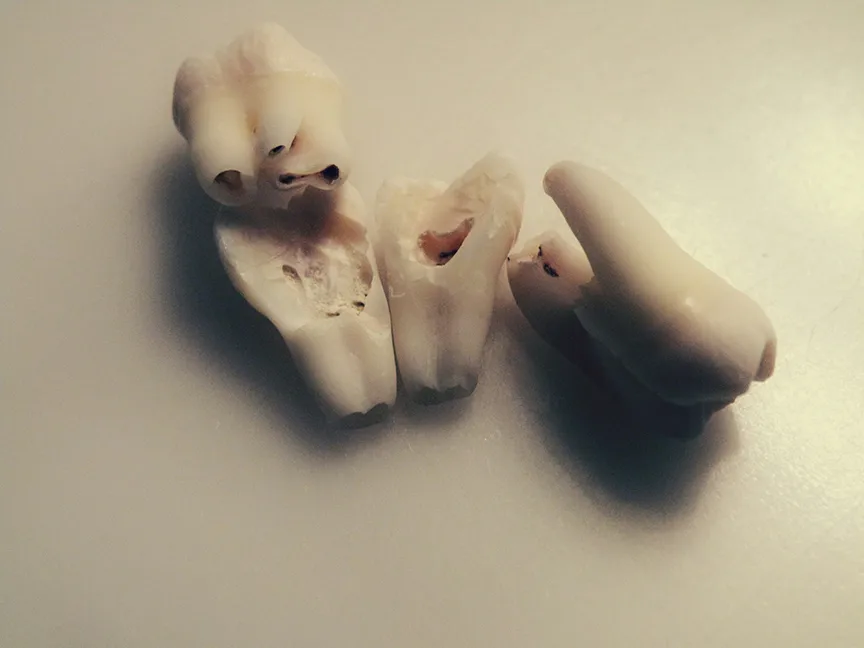A knocked out tooth represents one of the most urgent dental emergencies you can face. Whether it happens during a sports game, an accident, or an unexpected fall, knowing how to respond in those crucial first moments can mean the difference between saving your natural tooth and requiring a replacement.
Time becomes your most valuable ally when dealing with a knocked out tooth.
The window for successful reimplantation typically closes within 30 minutes to an hour, making your immediate response absolutely critical. Every second counts when it comes to preserving the delicate tissues that allow your tooth to reattach and heal properly. Understanding the right steps to take can transform what feels like a dental disaster into a manageable emergency with a positive outcome.
Immediate Action Steps for a Knocked Out Tooth
When faced with a knocked out tooth, your first instinct might be panic, but staying calm allows you to take the proper steps that could save your smile. The sequence of actions you take in the first few minutes will largely determine whether your tooth can be successfully reimplanted.
Start by locating the tooth immediately, but handle it with extreme care. Pick up the tooth by the crown (the white part you normally see), never by the root, as this can damage the delicate fibers necessary for reattachment. Even gentle pressure on the root area can destroy cells that are essential for healing.
If the tooth appears dirty, rinse it very gently with milk or clean water for no more than 10 seconds. Avoid scrubbing, using soap, or removing any tissue fragments that might be attached. These fragments often contain cells that can help the tooth reintegrate with your jawbone.
The next step involves getting the tooth back into its socket if possible. For adults and older teens, carefully try to reinsert the tooth into its original position, then bite down gently on a clean cloth or gauze to hold it in place. However, never attempt this with children, as there’s a risk they could swallow the tooth.
If reinsertion isn’t possible or advisable, preservation becomes crucial. Place the tooth in a container of cold milk, which helps maintain the cellular structure better than water or saliva. Emergency tooth preservation kits are available at many pharmacies, but milk serves as an excellent alternative when these kits aren’t readily available.
Critical Mistakes That Can Destroy Your Chances
Understanding what not to do can be just as important as knowing the correct steps. Many well-intentioned actions can actually make the situation worse and reduce the likelihood of successful treatment.
Never let the knocked out tooth dry out, as this kills the periodontal ligament cells within minutes. Wrapping the tooth in a tissue or cloth might seem protective, but it actually accelerates the drying process and should be avoided completely.
Resist the urge to clean the tooth with alcohol, bleach, or any household cleaning products. These substances destroy the delicate cells needed for reattachment and can cause chemical burns to your mouth if traces remain on the tooth.
Avoid storing the tooth in tap water, which can cause the cells to swell and burst due to osmotic pressure differences. Similarly, don’t place the tooth in ice, as freezing temperatures will damage the cellular structure beyond repair.
Professional Treatment Options and What to Expect
Emergency dental treatment for a knocked out tooth typically begins with a thorough examination to assess the condition of both the tooth and the surrounding tissues. Dr. Roulston and her team at Tulsa Dental Center understand the urgency of these situations and prioritize knocked out tooth cases as true dental emergencies.
The reimplantation process involves carefully cleaning the socket area and repositioning the tooth with precision. Your dentist will then secure the tooth in place using a flexible splint that allows for slight movement during the healing process, which actually promotes better reattachment than rigid stabilization.
Root canal therapy often becomes necessary following tooth reimplantation, typically beginning 7-10 days after the initial treatment. This procedure removes the damaged pulp tissue and helps prevent infection that could compromise the healing process. While this might sound concerning, root canal therapy actually increases the long-term success rate of reimplanted teeth significantly.
Follow-up appointments play a crucial role in monitoring the healing process and catching any complications early. These visits allow your dental team to track the progress of reattachment and make any necessary adjustments to your treatment plan.
Long-term Success and Recovery Expectations
The success rate for knocked out tooth reimplantation varies significantly based on several factors, with time being the most critical element. Teeth reimplanted within 30 minutes have success rates approaching 85-97%, while those out of the mouth for longer periods face increasingly challenging odds.
Age also influences the likelihood of successful reattachment. Children and teenagers often experience better outcomes due to their enhanced healing capacity and the ongoing development of their root structures. Adult patients can still achieve excellent results, particularly when proper emergency protocols are followed.
Recovery typically involves several weeks of careful monitoring and modified eating habits. Patients should avoid hard, crunchy, or sticky foods that could dislodge the reimplanted tooth during the critical healing period. Most people can return to normal activities within a few days, though contact sports should be avoided for several weeks.
Prevention Strategies That Actually Work
While accidents can happen to anyone, certain precautions can significantly reduce your risk of experiencing a knocked out tooth. Sports-related injuries account for a large percentage of dental trauma, making protective equipment your first line of defense.
Custom-fitted mouthguards provide superior protection compared to over-the-counter options. These devices distribute impact forces across multiple teeth rather than concentrating pressure on a single tooth, dramatically reducing the risk of complete tooth loss during contact sports or high-impact activities.
Addressing underlying dental issues proactively can also reduce vulnerability to tooth loss. Teeth weakened by decay, large fillings, or previous trauma are more susceptible to being knocked out during relatively minor impacts. Regular dental checkups help identify and address these risk factors before they become problematic.
Environmental awareness plays an important role in prevention as well. Be mindful of slippery surfaces, proper lighting when walking at night, and maintaining clear walkways free of obstacles that could cause falls.
Take Action Now to Protect Your Smile
A knocked out tooth doesn’t have to mean the end of your natural smile, but it does require immediate professional attention and proper emergency care. The steps you take in those crucial first moments can determine whether you keep your natural tooth or need a replacement.
Don’t wait when dental trauma strikes. Contact Tulsa Dental Center immediately at (918) 446-6100 if you or a family member experiences a knocked out tooth. Dr. Roulston and her experienced team provide emergency dental services and understand that dental trauma can’t wait for regular business hours. We’re here to help save your smile when every minute counts.


Recent Comments